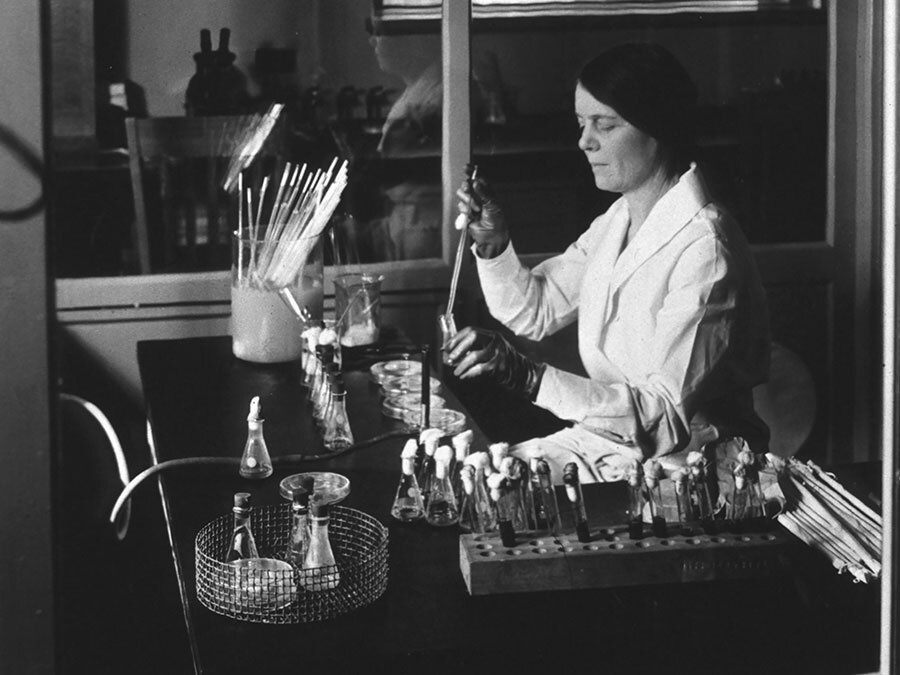
Dr. Ida Bengtson was the first woman the National Institutes of Health (NIH) hired as a scientist in 1916. For 30 years she served the NIH – and several communities throughout the U.S., including Rolla, as Dr. Kathleen Sheppard, associate professor of history at Missouri S&T, details in Selective Blindness: Ida Bengtson and the Treatment of Trachoma, published in Lady Science in 2018.
As Sheppard notes, Bengtson came to Rolla in 1924 to lead research on a blindness-causing eye disease named trachoma at the city’s hospital on 13th Street. She also worked as a lecturer in bacteriology at S&T and conducted research in lab space in Parker Hall’s basement.
Over 1,500 patients treated at the Rolla hospital benefitted from Bengtson’s research, and she shared the results of her work at a meeting of the Saint Louis Ophthalmic Society. Her work led to the creation of Rolla’s Trachoma Hospital, one of only four such hospitals in the country. (This building on Kingshighway is now home to S&T’s Rock Mechanics and Explosives Research Center.)
Bengtson worked in Rolla from 1924 to 1931 before moving on to work in the typhus unit of the NIH. She helped develop a vaccine for typhus and created the complement fixation test, a test still used today to detect Rocky Mountain spotted fever and other diseases.
“Bengtson is just one of those women whose successes became the disciplinary scaffolding that others would build upon,” Sheppard writes. “She contributed to multiple urgent projects because of her drive, her expertise, and her precision. Bengtson and her contemporaries laid the cornerstones of multiple fields and research lines, but few look for those cornerstones, which make finding sources about them almost impossible. Bengtson’s work on trachoma demonstrates the value of not just looking for ‘Female Firsts’ in science, but of understanding the breadth and depth of women’s contributions to multiple fields.”
Share This Story
Spark a Memory?
Share your story! Fill out the form below to share your fondest memory or anecdote of S&T. If you'd prefer not typing, you can also share by phone at 833-646-3715 (833-Miner150).
Amanda (Kay Hansen) and Chris Byrd
It was a fire drill at TJ Residence Hall in September 1999 that first brought Amanda (Kay Hansen) and Chris…
Megan (Jekel) and Jonathan Pardeck
Megan (Jekel), a member of Zeta Tau Alpha sorority, and Jonathan Pardeck, a member of Kappa Alpha fraternity, met through…
Samantha (Smith) and Andrew Keeven
Although Samantha (Smith) and Andrew Keeven met thanks to mutual friends during St. Pat’s in 2014, they didn’t get to…
Solar Village people
Before there was a Solar Village on campus, there was a sole villager. Allison Arnn graduated in 2005 with an…
James Kreilich and Mary Jane Naeger
James Kreilich and Mary Jane Naeger went to school together at Valle High School in 1960, but it wasn’t until…
Ashley (Koesterer) and Michael Pickler
Ashley (Koesterer) and Michael Pickler met in an English class at S&T in 2012 and started walking together after class….